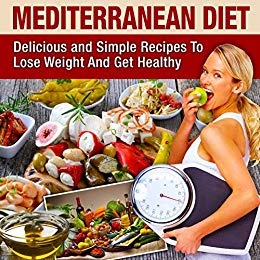You need healthy ingredients for a healthy diet.

“Diet and Exercise” – We’ve heard it many times. Exercise is important, but diet is by far the biggest factor in good health and weight loss. Your car isn’t the only engine that needs the right oil!
Extra Virgin Olive Oil has been recognized for its health benefits for centuries. Now scientific studies are showing that it can…
- Reduce inflammation such as arthritis
- Lower risk of heart disease
- Reduce risk of a stroke
- Reduce blood pressure
- Lower you “bad” cholesterol and reduce arterial plaque formation
- Reduce risk of breast, colon, and uterine cancer
- Reduce risk of neurodegenerative diseases including Alzheimer’s and Parkinson’s Disease
- Reduce cognitive decline in older age
Olive oil is key part of the Mediterranean Diet, replacing butter and other saturated fats with a healthy, monounsaturated fat. Start by simply substituting Ultra Premium Olive Oil when you would otherwise use butter – on toast, popcorn, and for cooking. Consider trying our Butter flavoured olive oil.
Yes! It is safe to cook with olive oil and when you substitute oil for butter, you can use less! See our FAQs below for more details.
Not all Extra Virgin Oils are the same. Olive the Best‘s Ultra Premium Extra Virgin Olive Oils are lab tested to ensure you are getting the most health-promoting oils available.
Frequently Asked Questions….
What does "Extra Virgin" mean?
For olive oil to be labelled “Extra Virgin” it must meet a series of chemical requirements (free fatty acidity of 0.8 percent or lower, peroxides at less than 20 milliequivalents per kilogram, etc.) and be able to pass a panel test that demonstrates both that it possesses some detectable level of olive fruitiness and that it is free of taste flaws. Flaws can be created using poor quality olives, overripe olives, flawed milling techniques, or faulty storage. There are officially 16 flaws that panels test for: fusty, mustiness/humidity, muddy sediment, winey/vinegary, metallic, rancid, heated or burnt, hay/wood, rough, greasy, vegetable water, brine, esparto, earthy, grubby, and cucumber.
Because of the range of allowable qualities that enable oils to be classified as “extra virgin,” it can be said that not all extra virgin olive oils are the same.
Our Ultra Premium standard ensures you are getting some of the very best quality Extra Virgin oils, truly “gourmet-quality.”
Note also that our fused and infused oils are made using Extra Virgin Olive Oil, but we cannot call them that because once anything has been done to change the flavour of an Extra Virgin Olive Oil it can no longer be called Extra Virgin.
How does your Ultra Premium Extra Virgin Olive Oil differ from what I can buy at the grocery store?
In a word: FRESHNESS. Our Ultra Premium oils are crushed twice per year (taking advantage of the northern and southern hemisphere harvest times), transported and stored in ideal conditions, and then bottled daily at the time of purchase. Because we use only the best olives, processing and storage methods, you experience the pure, natural flavour of the olive oil. Grocery store oils vary in quality and there have been a number of cases where manufacturers falsely labelled their oil “Extra Virgin.” For more on this, we recommend Tom Mueller’s book, “Extra VIRGINITY – The Sublime and Scandalous World of Olive Oil“
Is it true that you shouldn't cook with olive oil?
This is a myth. In particular, high quality olive oils such as Olive the Best’s Ultra Premium oils are low in free fatty acids which enables them to be used at higher temperatures than others. The following elaborates on this:
Frying with olive oil
The alteration undergone by vegetable oils when heated for frying is quicker the more the amount of fatty acids and the higher the initial acidity of the oil. This alteration also varies according to temperature and length of time heated, number of times used, manner of frying (in continuous frying it changes less), and the type of food being fried (frying fish, especially oily fish, increases the polyunsaturated acid content of the oil, facilitating its decomposition).
Olive oil is ideal for frying. In proper temperature conditions, without over-heating, it undergoes no substantial structural change and keeps its nutritional value better than other oils, not only because of the antioxidants but also due to its high levels of oleic acid. Its high smoking point (210ºC/410ºF) is substantially higher than the ideal temperature for frying food (180ºC/356ºF). Those fats with lower critical points, such as corn and butter, break down at this temperature and form toxic products.
Another advantage of using olive oil for frying is that it forms a crust on the surface of the food that impedes the penetration of oil and improves its flavour. Food fried in olive oil has a lower fat content than food fried in other oils, making olive oil more suitable for weight control. Olive oil, therefore, is the most suitable, the lightest and the tastiest medium for frying.
It goes further than other oils, and not only can it be re-used more often than others, it also increases in volume when reheated, so less is required for cooking and frying.
The digestibility of heated olive oil does not change even when re-used for frying several times.
Olive oil should not be mixed with other fats or vegetable oils and should not generally be used more than four or five times.
The oil used for frying should always be hot; if it is cold the food will soak up the oil.
All of the following are below the smoking point of good quality olive oil (210ºC/410ºF).
|
TEMPERATURE |
TYPE OF FOOD |
|
Medium (130–145ºC) |
High water content: vegetables, potatoes, fruit… |
|
Hot (155–170ºC) |
Coated in batter, flour or breadcrumbs, forming a crust |
|
Very hot (175–190ºC) |
Small, quickly fried: small fish, croquettes |
Can I substitute olive oil for butter?
Yes! In fact, you can use less olive oil compared to butter. The low saturated-fat and absence of cholesterol make olive oil a better choice than butter for the heart.
Here are some conversions:
One tsp. of butter can be replaced by 3/4 tsp. of olive oil; 1 tbsp. of butter can be replaced with 2 1/4 tsp. of olive. Replace 1/4 cup of butter with 3 tbsp. of olive oil and 1/3 cup of butter with 1/4 cup of olive oil. One-half cup of butter can be substituted for 1/4 cup plus 2 tbsp. of olive oil; replace 2/3 cup of butter with 1/2 cup of olive oil. Replace 1 cup of butter with 3/4 cup of olive oil. Substitute 3/4 cup of butter with 1/2 cup plus 1 tbsp. of olive oil. Use these conversions for baking, sautéing or frying.
If you are seeking that butter flavour, but want to use olive oil, we recommend our Butter Infused Olive Oil which is made not from butter, but all natural botanicals that give the oil a rich buttery taste.
What are the health benefits of your olive oil?
The health benefits of olive oil are now well supported by scientific research and the components responsible are verified by lab tests for our Ultra Premium Extra Virgin Olive Oils.
Good quality olive oil has been shown to reduce inflammation such as arthritis, lower risk of heart disease, reduce risk of a stroke, and even reduce the risk of certain cancers.
Will I get fat from eating olive oil?
Extra virgin olive oil helps in supporting your weight loss goals effectively. This is because of the satiating power of the fatty acids found in olive oil. The regular consumption of extra virgin olive oil leads to a greater feeling of fullness. Extra virgin olive oil does contain calories but it is a healthier type of fat and is a great alternative to the others like butter or refined oils, especially if you are on a diet.
In Greece, which consumes more olive oil than any other country, it is traditional to drink half a cup of extra virgin olive oil with lime water every morning to stay slim, prevent hunger pangs and increase longevity.
How are your Balsamic vinegars different to those I see in the grocery store?
All true Balsamic Vinegars are made from a white Tebbiano or Lambrusco grape must, which is the freshly pressed fruit juice that contains the skins, seeds, and stems of the grapes. The grape must is cooked over an open wood fire and is cooked down to the same consistency and density as dry solid extracts. The wood-fire-cooked grape must is then put directly into aged, fired wood barrels. The barrels, as well as the product they once contained, add character and complexity in flavour to the must. The probiotics wild yeast and acetic bacteria colonize it and eventually raise the acidity. It slowly ages in this manner and turns into “vinegar” over aging process (up to 18 years).
By Italian law, it must then be tested for quality by measuring many specific criteria, such as, the dry extract solids. Our Condimento’s very low acidity of 4.5% is a function of the grape must being naturally cooked down, condensed and aged without the addition of thickeners and sweeteners. All of our vinegars are Non-GMO Project Verified.
What is the difference between your dark and white balsamic vinegars?
Dark Balsamic Vinegar – Aged for a minimum of 12 years, dark balsamic vinegars are aged in the Traditional Solera Method in Modena, Italy, using fired, old wood barrels. Dark balsamic is ideal for cheese boards, brushed on meats, as a marinade, and even as a syrup substitute for ice cream!
White Balsamic Vinegar – White balsamic vinegars are made in the same way as dark except that they go through the aging process in new wood barrels. White balsamics are great for making a vibrant salad, in cocktails, in salsas, or as a sweet glaze for meats. No thickeners, sweeteners, or artificial flavourings are ever added to our products.
In both cases, unlike some grocery store brands, no thickeners, sweeteners, or artificial flavourings are ever added to our balsamic vinegars.
What are the health benefits of your balsamic vinegar?
Balsamic vinegar has many healthy properties, these include:
Aids in digestion – The polyphenols in balsamic vinegar boost the activity of pepsin, an enzyme that breaks protein down into smaller amino acids that can be more easily absorbed by the body. Effective amino acid absorption enables the body to utilize it for cell building, repair, and other body maintenance work.
Regulates blood sugar – Balsamic vinegar is low on the glycemic index, providing slower and more controlled changes to glucose levels. It can improve insulin sensitivity for diabetics, allowing for an easier regulation of blood sugar, and reducing unpleasant side effects from diabetes.
Aiding in weight loss – According to studies, balsamic vinegar is a source of calcium, iron, manganese and potassium, which improve the body’s functioning and weight loss abilities. Low in calories, it also helps to curb the body’s appetite and prevents overeating.
What is the difference between your "fused" and "infused" olive oil?
Our flavoured olive oils are created one of two ways. If the oil is “fused” it means the items that create the flavour (for example, lemons) are crushed at the same time as the olives. “Infused” oils are where the flavouring is added afterwards. In both cases, we use only natural ingredients.
How do I interpret the "lab analysis" data presented for your olive oils?
Our oils are lab tested at the time of crushing and are also sampled by a tasting panel. The results may include the following:
Biophenols/Polyphenols: A generic term for a range of phytochemicals contained in olive oil and other natural substances, many of which demonstrate antioxidant and anti-inflammatory properties. Polyphenols are widely held by medical researchers to have a range of positive health effects against such pathologies as cardiovascular disease, cancer, and Alzheimer’s disease. Because they protect against oxidation, polyphenols also protect olive oil against spoilage.
Free Fatty Acidity (FFA): An important chemical parameter for determining the quality of an olive oil, which is part of the olive oil grading system used by the IOC, the EU, the USDA, and Australian Olive Association, and many other bodies that oversee olive oil quality. As a general rule of thumb, the higher the FFA the more likely the oil is of poor quality. Anything over 0.5% is likely of poor quality, yet up to 0.8% is allowed for oils labelled “Extra Virgin.” Our Ultra-Premium oils are typically below 0.3%!
Oleic Acid: This is the primary fatty acid in olive oil, which is monounsaturated, and constitutes between 50 and 80 percent of most olive oils. Because of a lipid profile that is relatively resistant to oxidation, oleic acid gives olive oil a greater shelf life than most other oils. Oleic acid has been associated with some of the major health benefits of the Mediterranean diet, such as reduced incidence of coronary heart disease and cancer, and a 2005 study done at Northwestern University Feinberg School of Medicine that showed that oleic acid can cripple a gene that causes 25 to 30 percent of breast cancers.
Peroxides: An important chemical parameter for the quality of olive oil, which is part of the olive oil grading system of the IOC and other olive oil bodies. Generally speaking, an oil’s peroxide value indicates the extent to which it has been oxidized, typically through degradation by free radicals or by exposure to light. The peroxide levels for the extra virgin grade set by the IOC and others – less than 20 milliequivalents per kilogram – are far too high to guarantee good oils, which, like our Ultra-Premium oils, frequently have peroxides at well below 10 meq/kg.
DAGs and PPPs: These are relatively new tests that help detect old or illegally deodorized oils.
The panel tastings test for Fruitiness, Bitterness, and Pungency. While newcomers to olive oil tasting may dislike the pepper or burning sensation that some oils have, more experienced tasters tend to seek this out as it is often an indication that the olive oil contains many health-promoting constituents.

